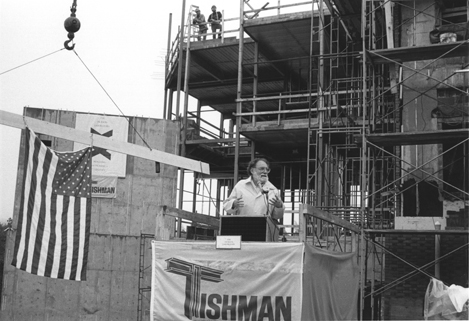
Faculty Research 1990 - 1999
Short- and long-term multilineage repopulating hematopoietic stem cells in late fetal and newborn mice: models for human umbilical cord blood.
Document Type
Article
Publication Date
1997
Keywords
Animals-Newborn, Cell-Differentiation, Cell-Division, Female, Fetal-Blood: cy, Hematopoiesis, Hematopoietic-Stem-Cells: cy, Human, Mice, Pregnancy, SUPPORT-U-S-GOVT-P-H-S
First Page
174
Last Page
181
JAX Source
Blood 1997 Jul 1;90(1):174-81
Grant
DK25678/DK/NIDDK, HL46536/HL/NHLBI, AG10838/AG/NIA
Abstract
Blood from late fetal and newborn mice is similar to umbilical cord blood obtained at birth in human beings, an important source of stem cells for clinical transplantation. The mouse model is useful because long-term functions can be readily assayed in vivo. To evaluate the functions of hematopoietic precursors in the blood and other tissues of late fetal and newborn mice, short- and long-term multilineage repopulating abilities were measured in vivo by competitive repopulation. Manipulations that might affect cell function, such as enrichment, tissue culture, or retroviral marking, were avoided. Hematopoietic stem cell functions of late fetal or newborn blood, liver, and spleen, were assayed as myeloid and lymphoid repopulating abilities relative to standard adult marrow cells. Donor cells from these tissues as well as adult control donor marrow cells were all of the same genotype. Cells from each donor tissue were mixed with portions from a pool of standard adult "competitor" marrow distinguished from the donors by genetic differences in hemoglobin and glucosephosphate isomerase. After 21 to 413 days, percentages of donor type myeloid and lymphoid cells in recipient blood were measured to assay the functional abilities of donor precursors relative to the standard. These relative measures are expressed as repopulating units, where each unit is equivalent to the repopulating ability found in 100,000 standard adult marrow cells. Thus, measures of repopulating units do not compare single cells but overall repopulating abilities of donor cell populations. Relative functional abilities in 1 million nucleated cells from late fetal or newborn blood were several times less than those found in adult marrow, but far more than in normal adult blood, and appeared to include long-term functional primitive hematopoietic stem cells (PHSC) similar to those in marrow. To estimate functional abilities of individual PHSC, variances among large groups of identical recipients were analyzed using both the binomial model and competitive dilution, a new model based on the Poisson distribution. The data best fit the hypothesis that individual PHSC from adult marrow, late fetal blood, or newborn blood each produce similar fractions of the total lymphoid and erythroid cells found in the recipient for many months.
Recommended Citation
Harrison DE,
Astle CM.
Short- and long-term multilineage repopulating hematopoietic stem cells in late fetal and newborn mice: models for human umbilical cord blood. Blood 1997 Jul 1;90(1):174-81

